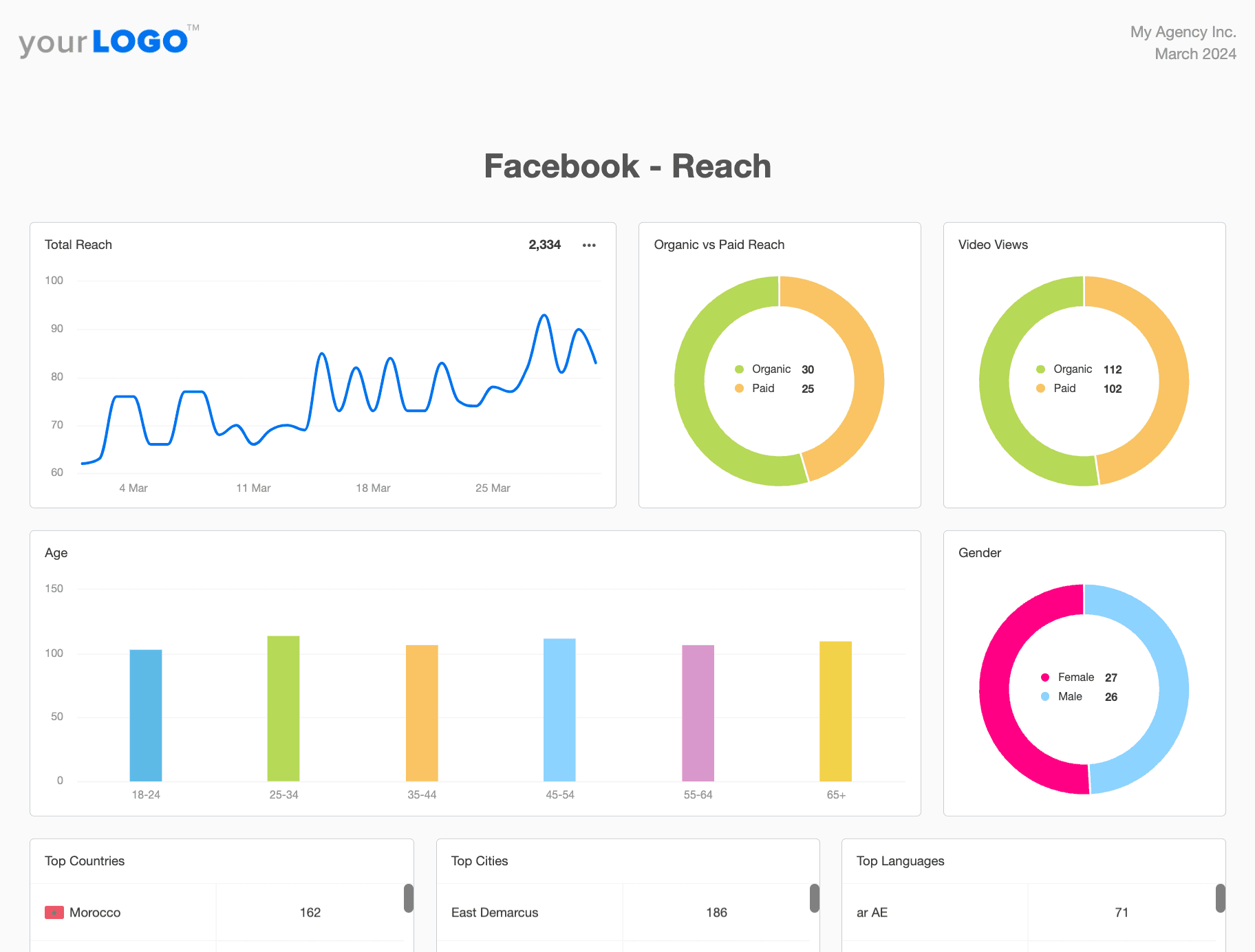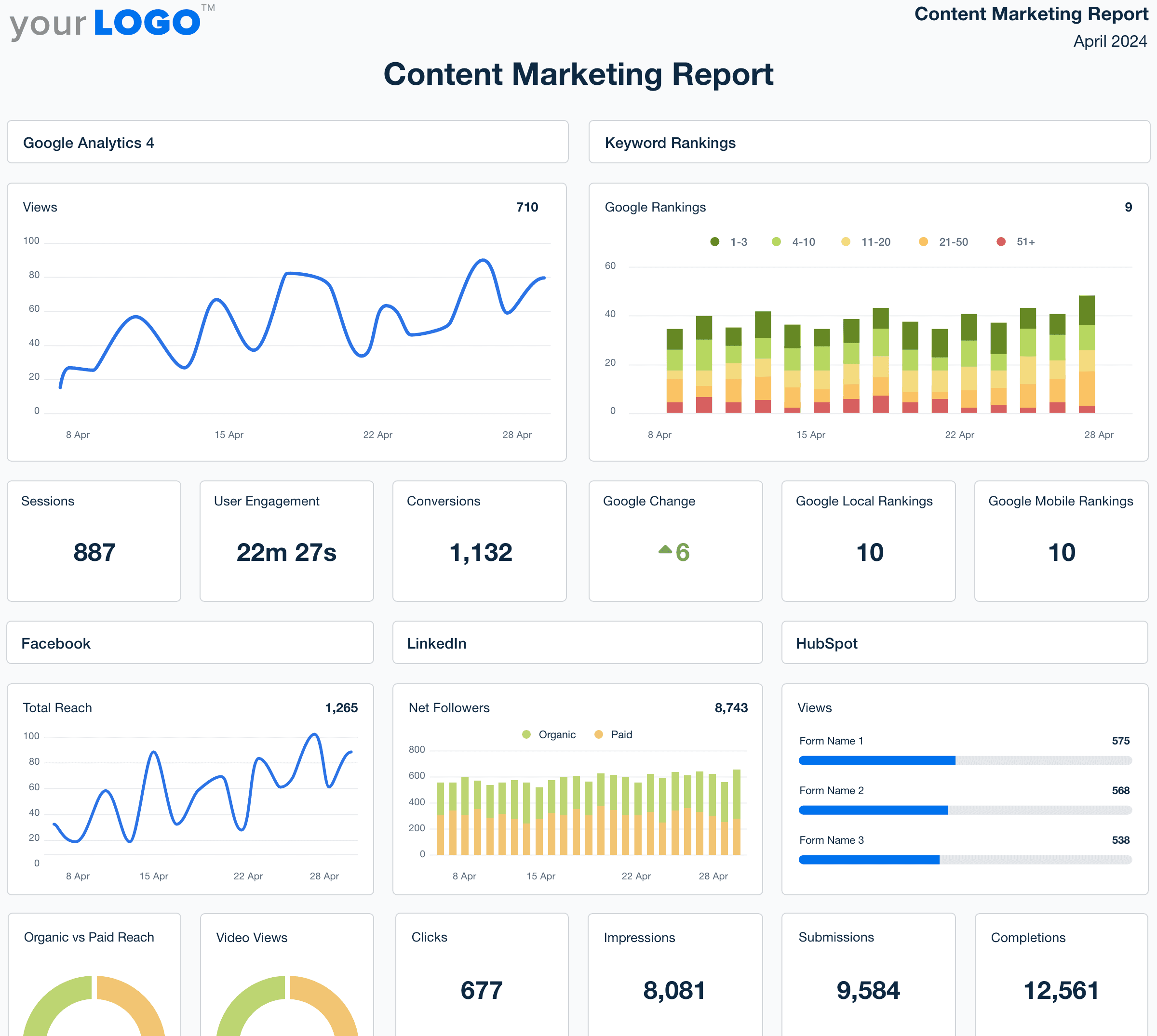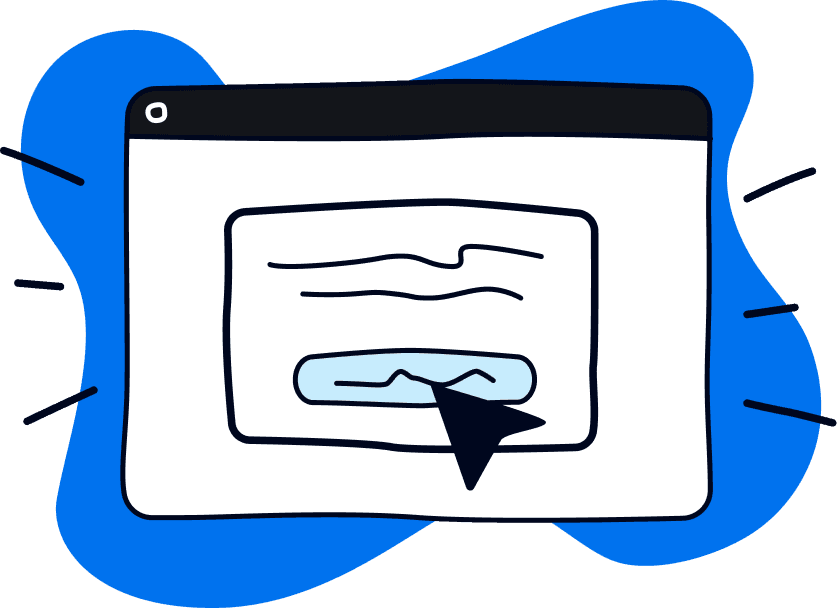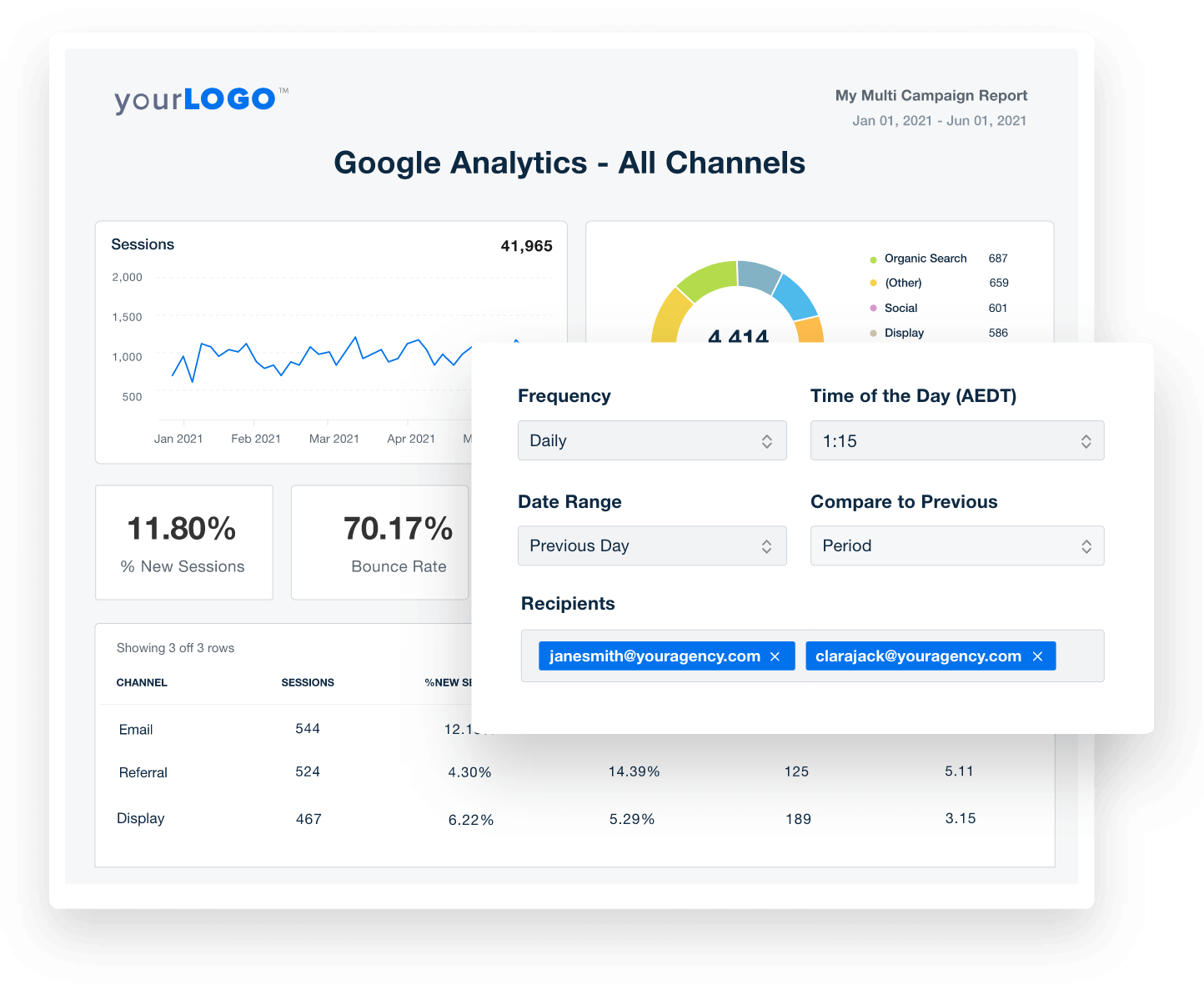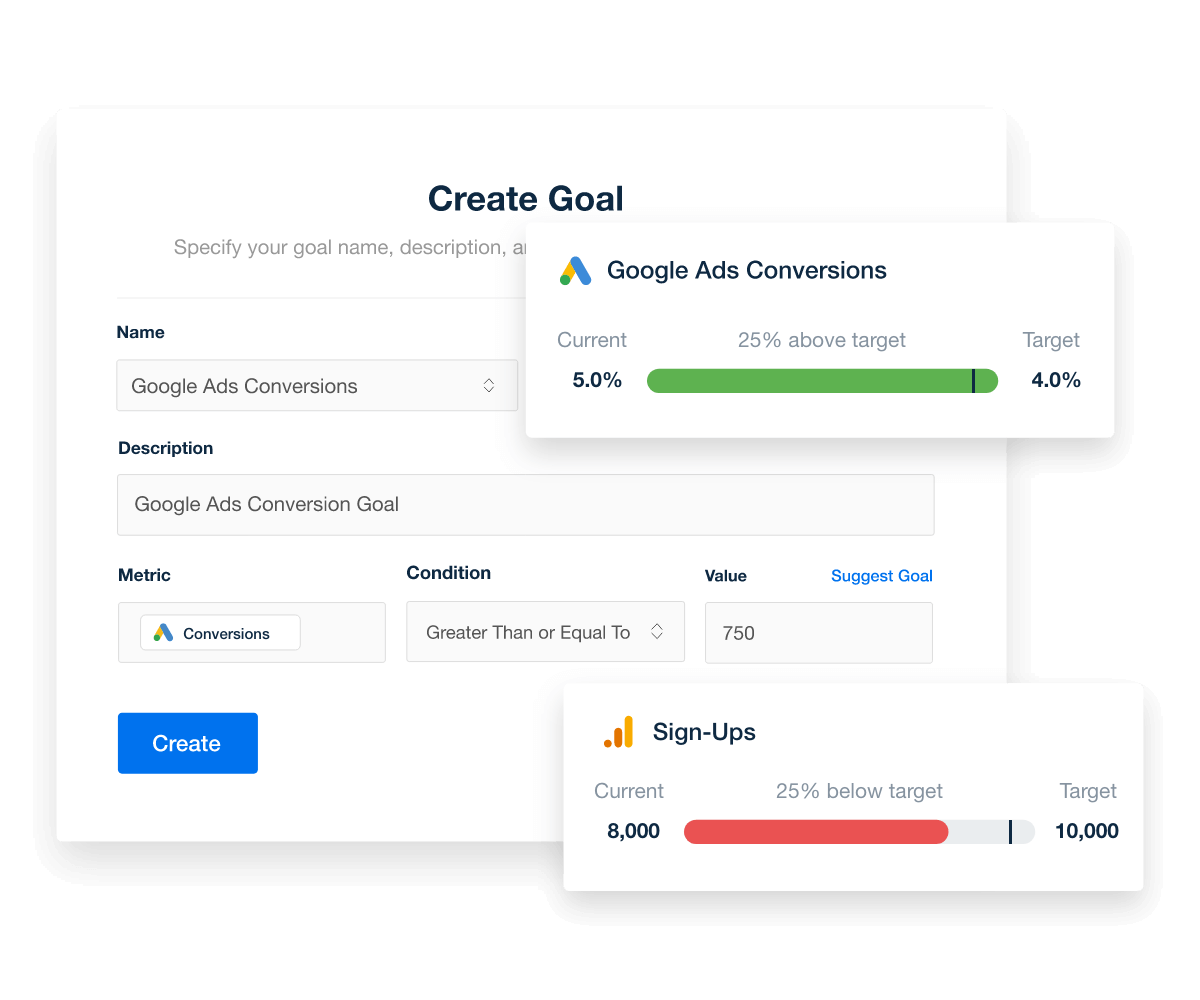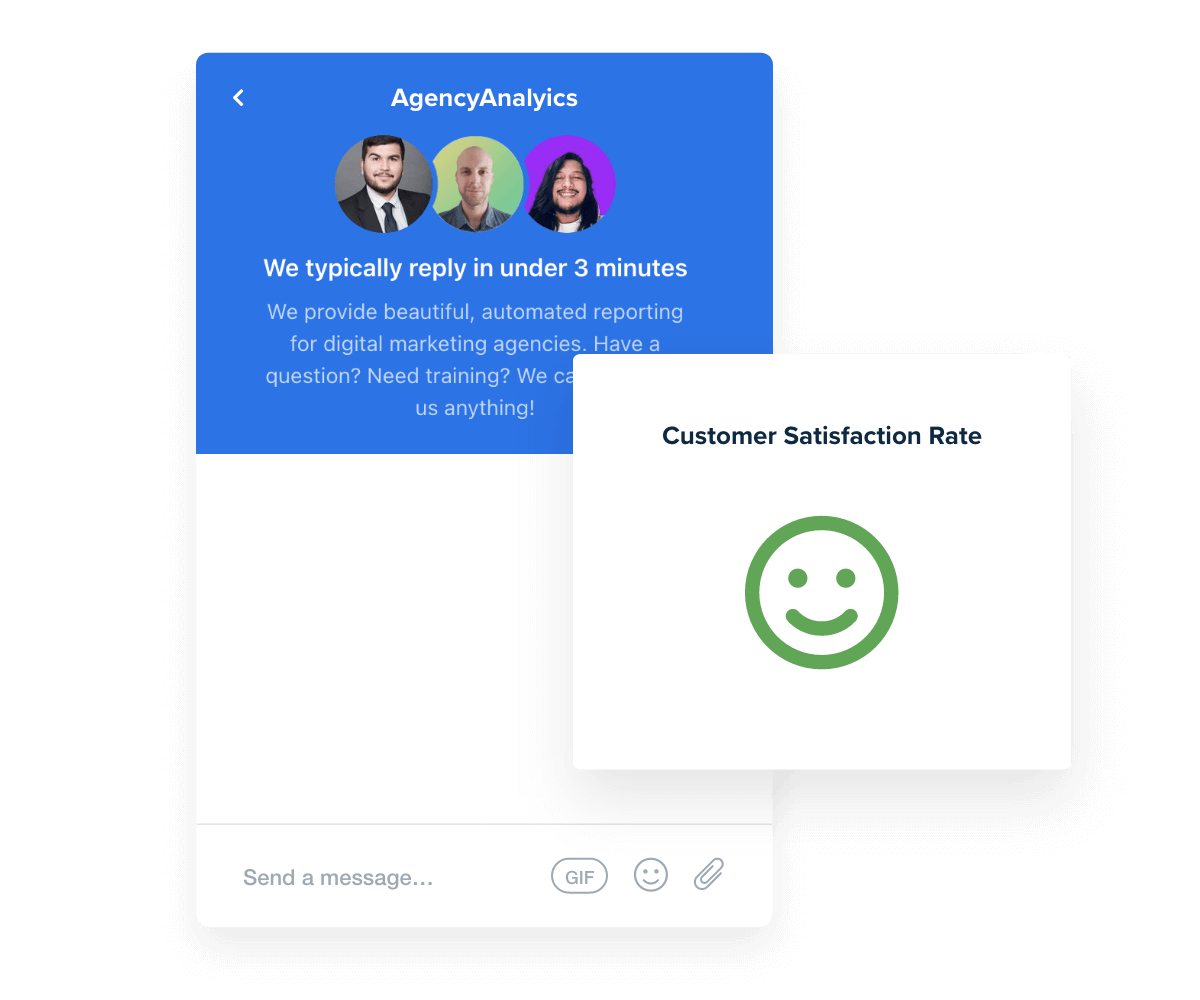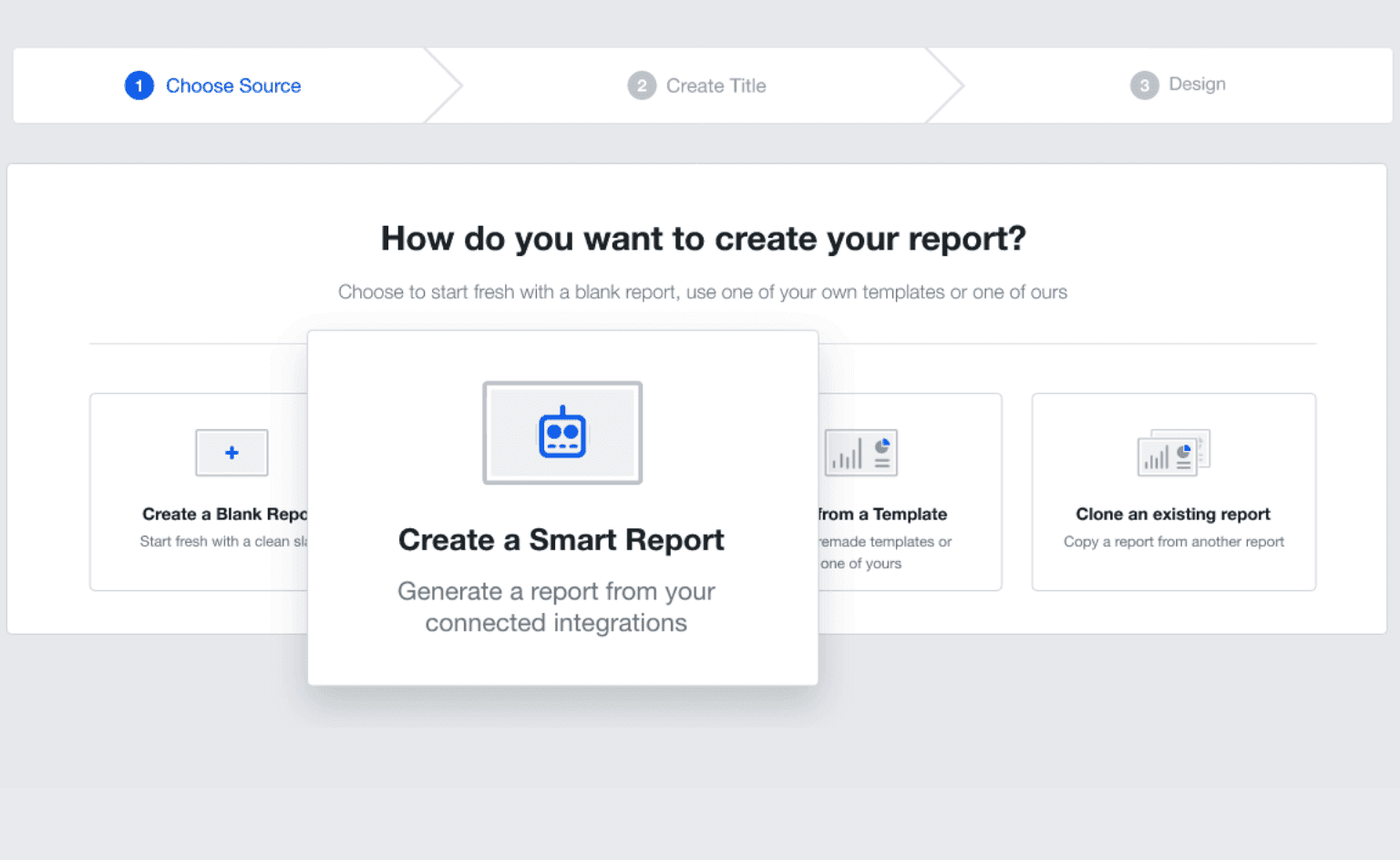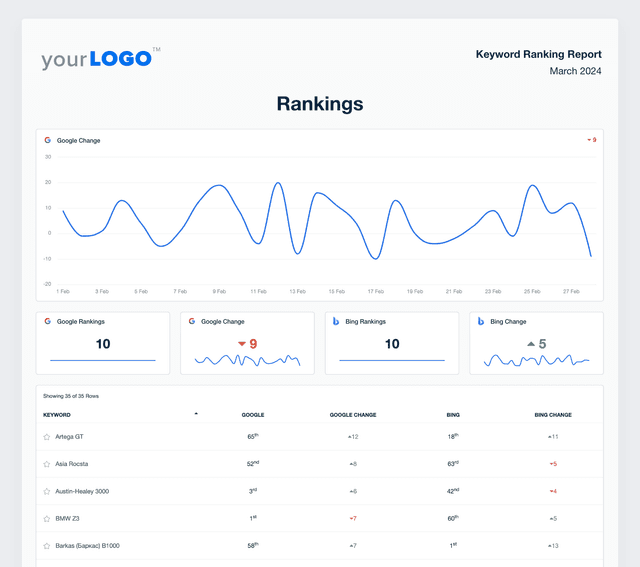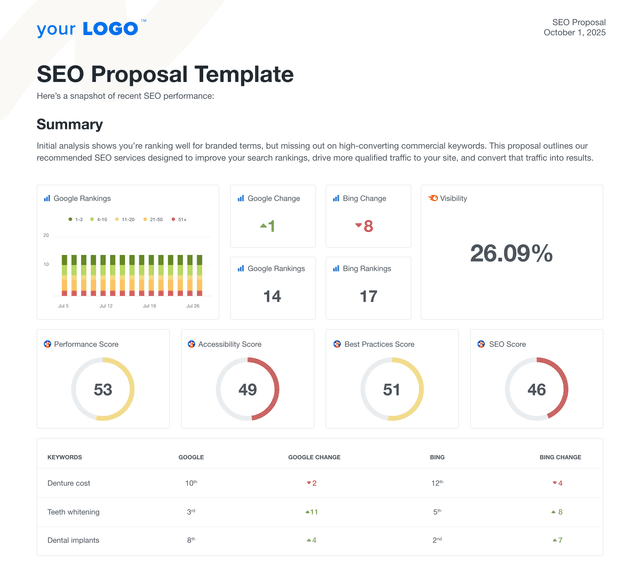Content Marketing Report Template for Quick, Clear Updates
Customizable Content Marketing Report Templates Built for Agencies
Speed up reporting and maintain a consistent client experience with content marketing templates tailored to agency workflows. Customize layouts, apply your agency’s branding, and use drag-and-drop visualizations to showcase performance metrics that matter.
Connect reports directly to live data from 80 marketing platform integrations to eliminate manual updates. Share clear, professional reports that help clients understand results fast—reinforcing your agency’s strategic value with every update.
Custom Content Marketing Reports as Unique as Your Agency
Create Content Marketing Reports in Minutes–Not Hours
Leverage automated report templates and data retrieval to dramatically reduce the time your team spends compiling data. Free up your agency to focus more on strategy and client engagement. With these tools, quickly generate detailed reports, make decisions faster, and spend more time to create impactful marketing campaigns that meet client needs.
Sign up for your free trial now!
No credit card required. No setup hassle. Just instant access to automated reporting, custom dashboards, and multi-channel insights.
13 Sections To Include in a Content Marketing Report Template
A professional-looking and branded report cover page sets the tone for the following information. It serves as the first impression, reflecting your agency's branding and attention to detail, significantly boosting your credibility and client trust from the outset.
The cover page should clearly indicate the reporting period, stating the specific date range the report covers, whether monthly, quarterly, or specific to a campaign, ensuring clarity and relevance for the reader.
The ability to save your cover page designs as custom templates creates consistent branding across all client reports. This saves time and reinforces your brand identity with every report you present.
Starting from the cover page, a well-designed report enhances readability, displays professionalism, and ultimately contributes to a clearer understanding of the data, making your insights more actionable and your reports more impactful.
Let’s face it: Busy stakeholders don’t have time to investigate granular or vanity metrics. An executive summary included at the beginning of your report is crucial for providing a concise overview of the most critical insights and findings.
The summary distills complex data into key points. It ensures the main conclusions and recommendations are front and center, assisting in swift decision-making and effective communication of agency value.
Creating an effective content marketing report summary involves distilling complex information from multiple tools into clear, actionable insights.
Google Analytics 4 offers a future-proof way to track user interactions across platforms. This platform helps agencies capture a wide array of data, from web traffic and average session duration to user engagement, without missing a beat.
Google Analytics 4 metrics are essential for demonstrating the value delivered to clients. This tool tracks everything from website visitors to engagement metrics, presenting a holistic view of performance across various platforms—from search engines to social media platforms.
By incorporating Google Analytics 4 data, agencies highlight their strategic ability to adapt to client needs and market changes. Reports become more than just numbers; they narrate how content drives user engagement and contributes to business goals—from increasing organic traffic to converting visitors into paying customers.
Google Search Console is an indispensable tool for tracking a website's performance in search results. It provides detailed insights into organic search traffic, search queries, and web page indexing status, which are crucial for optimizing content and improving visibility.
Google Search Console data is vital for demonstrating the effectiveness of SEO strategies—how many visitors find a website via search engines, which keywords drive traffic, and how content ranks in search results.
By using Google Search Console, agencies track the health and performance of a particular page and pinpoint opportunities for enhancing visibility and engagement. The data helps agencies refine SEO tactics and tailor content strategies to increase organic traffic and ensure content resonates with the target audience, enhancing overall content marketing ROI.
Keyword rankings are fundamental content marketing metrics for assessing the effectiveness of content marketing efforts. They provide clear, actionable insights into how content performs in search engine results, directly influencing web traffic and organic search success.
These rankings offer a snapshot of a client's web pages' performance, helping content marketers understand which terms drive the most valuable website visitors. By leveraging this data, marketing teams optimize content to improve search engine visibility and engagement metrics, increase organic traffic, and retain users.
Keyword rankings also help quantify content marketing's impact on business goals and provide a clear view of how well content attracts quality leads and converts them into paying customers. Using keyword rankings as a guide, agencies refine their content strategy, ensuring that every blog post, social media update, and web page contributes effectively to overall marketing objectives.
Semrush visibility is a key indicator in content marketing analytics that reveals how visible a website is within search engine results. This metric integrates keyword rankings, search volume, and estimated click-through rate (CTR) to provide a holistic view of a website's online presence.
This metric allows content marketers to track how well web pages perform against competitors and gauge the success of strategies to increase organic traffic.
Semrush Visibility assists in aligning SEO and content strategies with the target audience's preferences and behaviors, optimizing content to boost engagement metrics and retain users.
Moz backlinks are essential for understanding the quality and quantity of external links pointing to a website, significant factors in search engine rankings. These key metrics provide detailed insights into the link profile, helping content marketers gauge the impact of backlinks on their SEO efforts.
Integrating Moz Backlinks data into content marketing reports allows marketing agencies to demonstrate their proficiency in building a robust link-building strategy that supports organic search growth. Backlinks show the relevance and authority of a website's content, making them critical metrics for evaluating content marketing efforts.
By analyzing backlinks, agencies show how their content attracts links, boosts website traffic, and enhances content quality. This is particularly important for clients aiming to increase organic traffic and improve their online visibility. Well-rounded content reports include a comprehensive backlinks analysis detailing how each contributes to the site's SEO performance and content marketing ROI.
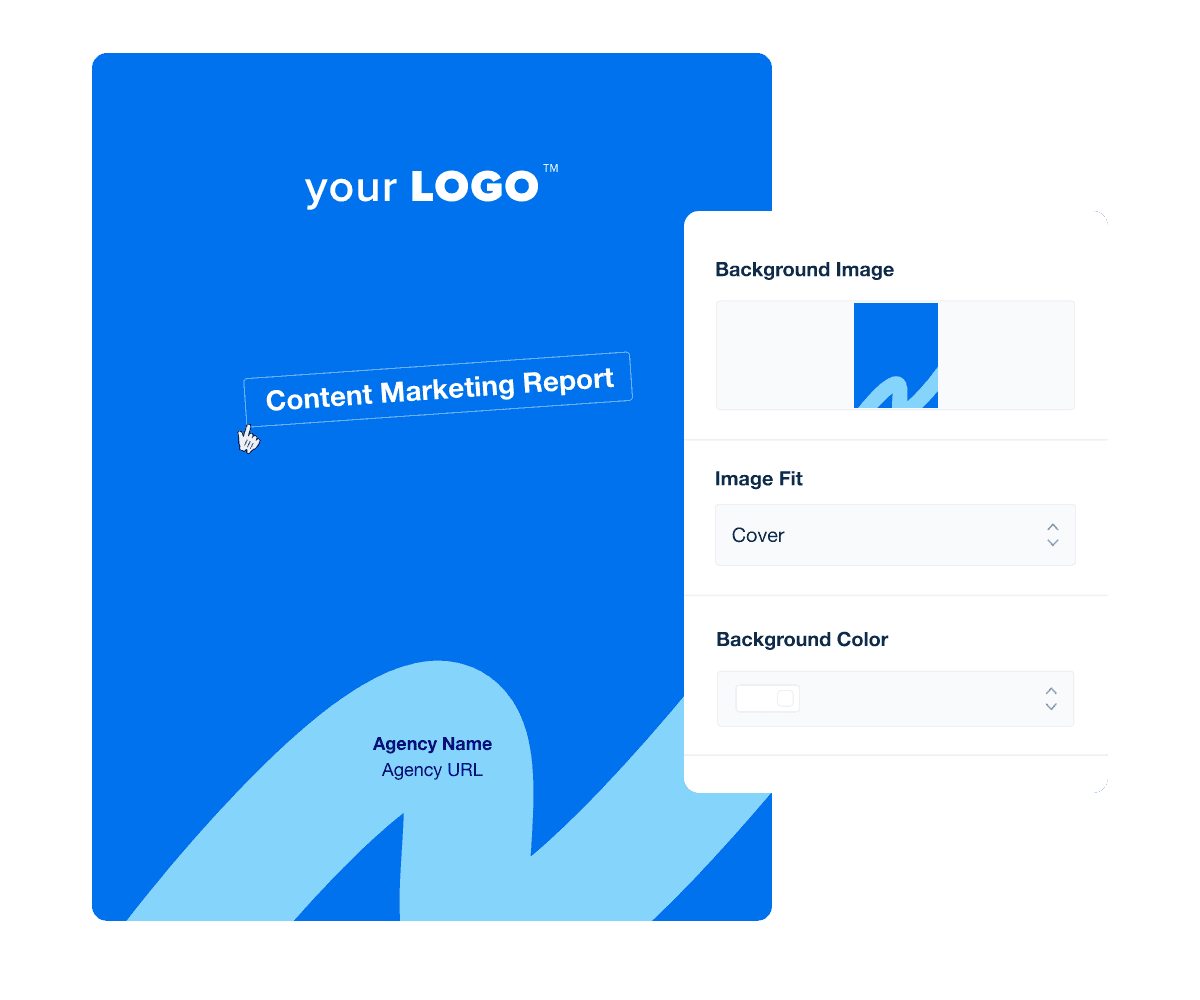
Build custom content marketing reports that deliver results
Save time and impress clients with a powerful, results-driven report template. Access the free content marketing report template today!
Facebook and Instagram reach metrics measure how many unique users see a post or campaign via Meta, one of the world's largest social media platforms, providing critical data on the spread and impact of social media efforts.
Including Facebook and Instagram reach data in content marketing reports showcases the breadth of an agency’s social media strategies. This metric offers a direct look at how well content performs in capturing the attention of the target audience on Facebook, highlighting the effectiveness of content promotion and engagement strategies.
By leveraging these metrics, marketing teams optimize their social media content to better engage users and expand their client’s digital footprint. This data is crucial for creating content that resonates with the audience, fosters increased engagement, and drives web traffic from social media platforms to the client's site.
YouTube metrics are crucial for understanding video content performance. They provide insights into viewer engagement, reach, and conversion. These metrics include views, watch time, subscriber growth, and interaction rates, such as likes and comments.
Incorporating YouTube into content marketing reporting templates demonstrates an agency’s proficiency in managing diverse content types across multiple platforms.
By analyzing YouTube metrics, marketing teams fine-tune their video content strategies to enhance viewer engagement and retention. They get a deeper understanding of what content keeps users engaged, which videos drive substantial traffic, and how video content contributes to the overall content marketing ROI.
TikTok metrics are indispensable for gauging content performance on one of the most engaging and rapidly growing social media platforms. These metrics track viewer interactions, such as likes, shares, comments, and views, which provide essential insights into user engagement and content virality.
By leveraging TikTok metrics, marketing teams tailor their strategies to boost user interaction and increase the viral potential of their content. This allows agencies to refine their content creation efforts, ensuring that each piece is optimized for maximum impact and aligns with the latest trends and user behaviors on TikTok.
LinkedIn engagement metrics—likes, comments, shares, and impressions—offer crucial insights into how effectively content resonates with a professional audience and fosters business connections.
LinkedIn engagement data demonstrates how content engages industry professionals, influences thought leadership, and drives business-to-business interactions. By analyzing LinkedIn metrics, marketing teams enhance the relevance and impact of their content. This helps ensure that every article, post, and shared piece of content reaches the intended audience and prompts meaningful engagement that leads to professional opportunities and partnerships.
HubSpot forms metrics provide essential insights into user interactions and conversion rates, which are essential for evaluating the effectiveness of inbound marketing strategies. These important metrics track how many visitors interact with forms, the completion rates, and the quality of the leads generated.
HubSpot forms data is crucial for agencies focused on lead generation and conversion optimization. It offers a granular view of how effectively forms capture potential client information—a direct measure of content engagement and interest.
These metrics help marketing teams refine form design and placement, ensuring they are as effective as possible in converting visitors into leads. This involves adjusting questions to be more relevant to the target audience, optimizing form fields for ease of use, and strategically placing forms on web pages that receive high traffic.
Email campaign metrics (e.g., MailChimp) are crucial for assessing the effectiveness of email marketing strategies. These metrics, including open rates, click-through rates, conversion rates, and bounce rates, provide comprehensive insights into how recipients interact with email marketing content.
Email campaign data highlights the success of email content, from its ability to engage recipients, to its effectiveness in driving specific actions like website visits or purchases.
These metrics help marketing teams optimize email strategies to improve recipient engagement and conversion rates. This might involve refining the timing of emails, segmenting the audience for more personalized messaging, or adjusting the email content to better resonate with the target audience—essential for keeping the content relevant and engaging and maximizing the impact of each campaign.
